A remaindered link that I keep forgetting to post. A couple of weeks back, Time Out London ran a nice little “future of books” feature that makes mention of the Institute. A good chunk of it focuses on On Demand Books, the Espresso book machine and the evolution of print, but it also manages to delve a bit into networked territory, looking at Penguin’s wiki novel project and including a few remarks from me about the yuckiness of e-book hardware and the social aspects of text. Leading up to the article, I had some nice conversations over email and phone with the writer Jessica Winter, most of which of course had no hope of fitting into a ~1300-word piece. And as tends to be the case, the more interesting stuff ended up on the cutting room floor. So I thought I’d take advantage of our laxer space restrictions and throw up for any who are interested some of that conversation.
(Questions are in bold. Please excuse rambliness.)
The other day I was having an interesting conversation with a book editor in which we were trying to determine whether a book is more like a table or a computer; i.e., is a book a really good piece of technology in its present form, or does it need constant rethinking and upgrades, or is it both? Another way of asking this question: Will the regular paper-and-glue book go the way of the stone tablet and the codex, or will it continue to coexist with digital versions? (Sorry, you must get asked this question all the time…)
We keep coming back to this question is because it’s such a tricky one. The simple answer is yes.
The more complicated answer…
When folks at the Institute talk about “the book,” we’re really more interested in the role the book historically has played in our civilization — that is, as the primary vehicle humans use for moving around ideas. In this sense, it seems pretty certain that the future of the book, or to put it more awkwardly, the future of intellectual discourse, is shifting inexorably from printed pages to networked screens.
Predicting hardware is a tougher and ultimately less interesting pursuit. I guess you could say we’re agnostic: unsure about the survival or non-survival of the paper-and-glue book as we are about the success or failure of the latest e-book reading device to hit the market. Still, there’s this strong impulse to try to guess which forms will prevail and which will go extinct. But if you look at the history of media you find that things usually aren’t so clear cut.
It’s actually quite seldom the case that one form flat out replaces another. Far more often the two forms go on existing together, affecting and changing one other in a variety of ways. Photography didn’t kill painting as many predicted it would. Instead it caused a crisis that led to Impressionism and Abstract Expressionism. TV didn’t kill radio but it did usurp radio’s place at the center of the culture and changed the sorts of programming that it made sense for radio to deliver. So far the Internet hasn’t killed TV but there’s no question that it’s bringing about a radical shift in both the production and consumption of television, blurring the line between the two.
The Internet probably won’t kill off books either but it will almost certainly affect what sorts of books get produced, and on the ways in which we read and write them. It’s happening already. Books that look and feel much the same way today as they looked and felt 30 years ago are now almost invariably written on computers with word processing applications, and increasingly, researched or even written on the Web.
Certain things that we used to think of as books — encyclopedias, atlases, phone directories, catalogs — have already been reinvented, and in some cases merged. Other sorts of works, particularly long-form narratives, seem to have a more durable relationship with the printed word. But even here, our relationship with these books is changing as we become more accustomed to new networked forms. Continuous partial attention. Porous boundaries between documents and media. Social and participatory forms of reading. Writing in public. All these things change the very idea of reading and writing, so when you resume an offline mode of doing these things, your perceptions and way of thinking have likely changed.
(A side note. I think this experience of passage back and forth between off and online forms, between analog and digital, is itself significant and for people in our generation, with our general background, is probably the defining state of being. We’re neither immigrant or native. Or to dip into another analogical pot, we’re amphibians.)
As time and technology progress and we move with increasing fluidity between print and digital, we may come to better appreciate the unique affordances of the print book. Looked at one way, the book is an outmoded technology. It lacks the interactivity and interconnectedness of networked communication and is extremely limited in scope when compared with the practically boundless universe of texts and media that exists online. But you could also see this boundedness is its greatest virtue — the focus and structure it brings, enabling sustained thought and contemplation and private intellectual growth. Not to mention archival stability. In these ways the book is a technology that would be hard to improve upon.
John Updike has said that books represent “an encounter, in silence, of two minds.” Does that hold true now, or will it continue to as we continue to rethink the means of production (both technological and intellectual) of books? What are the advantages and disadvantages of a networked book over a book traditionally conceived in that “silent encounter”?
I think I partly answered this question in the last round. But again, as with media forms, so too with ways of reading. Updike is talking about a certain kind of reading, the kind that is best suited to the sorts of things he writes: novels, short stories and criticism. But it would be a mistake to apply this as a universal principle for all books, especially books that are intended as much, if not more, as a jumping off point for discussion as for that silent encounter.
Perhaps the biggest change being brought about by new networked forms of communication is the redefinition of the place of the individual in relation to the collective. The present publishing system very much favors the individual, both in the culture of reverence that surrounds authors and in the intellectual property system that upholds their status as professionals. Updike is at the top of this particular heap and so naturally he defends it as though it were the inviolable natural order.
Digital communication radically clashes with this order: by divorcing intellectual property from physical property (a marriage that has long enabled the culture industry to do business) and by re-situating textual communication in the network, connecting authors and readers in startling ways that rearrange the traditional hiearchies.
What do you think of print-on-demand technology like the Espresso machine? One quibble that I have with it, and it’s probably a lost cause, is that it seems part of the death of browsing (which is otherwise hastened by the demise of the independent bookstore and the rise of the “drive-through” library); opportunities for a chance encounter with a book seem to be lessened. Just curious–has the Institute addressed the importance of browsing at all?
The serendipity of physical browsing would indeed be unfortunate to lose, and there may be some ways of replicating it online. North Carolina State University uses software called Endeca for their online catalog where you pull up a record of a book and you can look at what else is next to it on the physical shelf. But generally speaking browsing in the network age is becoming a social affair. Behavior-derived algorithms are one approach — Amazon’s collaborative filtering system, based on the aggregate clickstreams and purchasing patterns of its customers, is very useful and getting better all the time. Then there’s social bookmarking. There, taxonomy becomes social, serendipity not just a chance encounter with a book or document, but with another reader, or group of readers.
And some other scattered remarks about conversation and the persistent need for editors:
Blogging, comments, message boards, etc… In some ways, the document as a whole is just the seed for the responses. It’s pointing toward a different kind of writing that is more dialogical, and we haven’t really figured it out yet. We don’t yet know how to manage and represent complex conversations in an electronic environment. From a chat room to a discussion forum to a comment stream in a blog post, even to an e-mail thread or a multiparty instant-messaging conversation–it’s just a list of remarks, a linear transcript that flattens the discussion’s spirals, loops and pretzels into a single straight line. In other words, the minute the conversation becomes complex, we become unable to make that complexity readable.
We’ve talked about setting up shop in Second Life and doing an experiment there in modeling conversations. But I’m more interested in finding some way of expanding two-dimensional interfaces into 2.5. We don’t yet know how to represent conversations on a screen once it crosses a certain threshold of complexity.
People gauge comment counts as a measure of the social success of a piece of writing or a video clip. If you look at Huffington Post, you’ll see posts that have 500 comments. Once it gets to that level, it’s sort of impenetrable. It makes the role of filters, of editors and curators–people who can make sound selections–more crucial than ever.
Until recently, publishing existed as a bottleneck model with certain material barriers to publishing. The ability to overleap those barriers was concentrated in a few bottlenecks, with editorial filters to choose what actually got out there. Those material barriers are no longer there; there’s still an enormous digital divide, but for the 1 billion or so people who are connected, those barriers are incredibly low. There’s suddenly a super-abundance of information with no gatekeeper; instead of a bottleneck, we have a deluge. The act of filtering and selecting it down becomes incredibly important. The function that editors serve in the current context will be need to be updated and expanded.

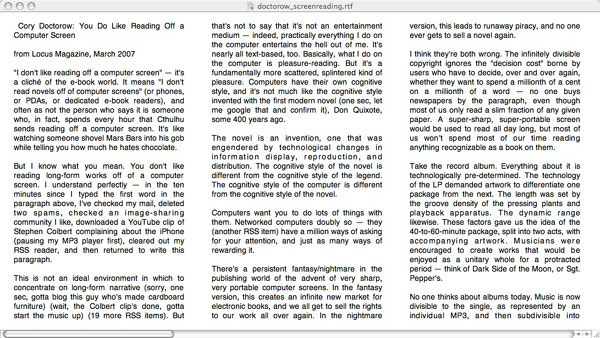
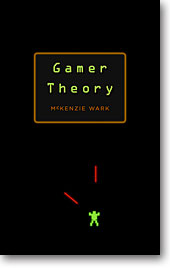 How can we ‘see’ a written text? Do you have a new way of visualizing writing on the screen? If so, then McKenzie Wark and the Institute for the Future of the Book have a challenge for you. We want you to visualize McKenzie’s new book, Gamer Theory.
How can we ‘see’ a written text? Do you have a new way of visualizing writing on the screen? If so, then McKenzie Wark and the Institute for the Future of the Book have a challenge for you. We want you to visualize McKenzie’s new book, Gamer Theory.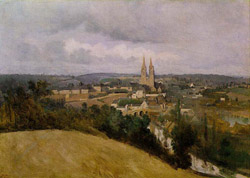 While my main interest was in starting a community, I had other ideas — about making the archive more editable by readers — that I thought would form a separate discussion. But once we started talking I was surprised by how intimately the two were bound together.
While my main interest was in starting a community, I had other ideas — about making the archive more editable by readers — that I thought would form a separate discussion. But once we started talking I was surprised by how intimately the two were bound together.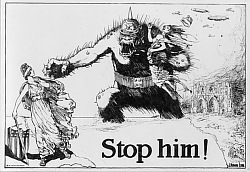 If the Ecclesiastical Proust Archive widens to enable readers to add passages according to their own readings (let’s pretend for the moment that copyright infringement doesn’t exist), to tag passages, add images, add video or music, and so on, it would eventually become a sprawling, unwieldy, and probably unbalanced mess. That is the very nature of an Archive. Fine. But then the original purpose of the project — doing focused literary criticism and a study of narrative — might be lost.
If the Ecclesiastical Proust Archive widens to enable readers to add passages according to their own readings (let’s pretend for the moment that copyright infringement doesn’t exist), to tag passages, add images, add video or music, and so on, it would eventually become a sprawling, unwieldy, and probably unbalanced mess. That is the very nature of an Archive. Fine. But then the original purpose of the project — doing focused literary criticism and a study of narrative — might be lost.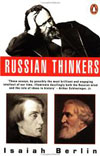 An
An 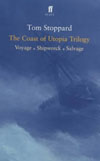 This long preface to illustrate a similar, but rather odd, phenomenon. Russian Thinkers by Isaiah Berlin has disappeared from all bookshops in New York. Anne Cattaneo, the dramaturg of Tom Stoppard’s “The Coast of Utopia” (reviewed
This long preface to illustrate a similar, but rather odd, phenomenon. Russian Thinkers by Isaiah Berlin has disappeared from all bookshops in New York. Anne Cattaneo, the dramaturg of Tom Stoppard’s “The Coast of Utopia” (reviewed